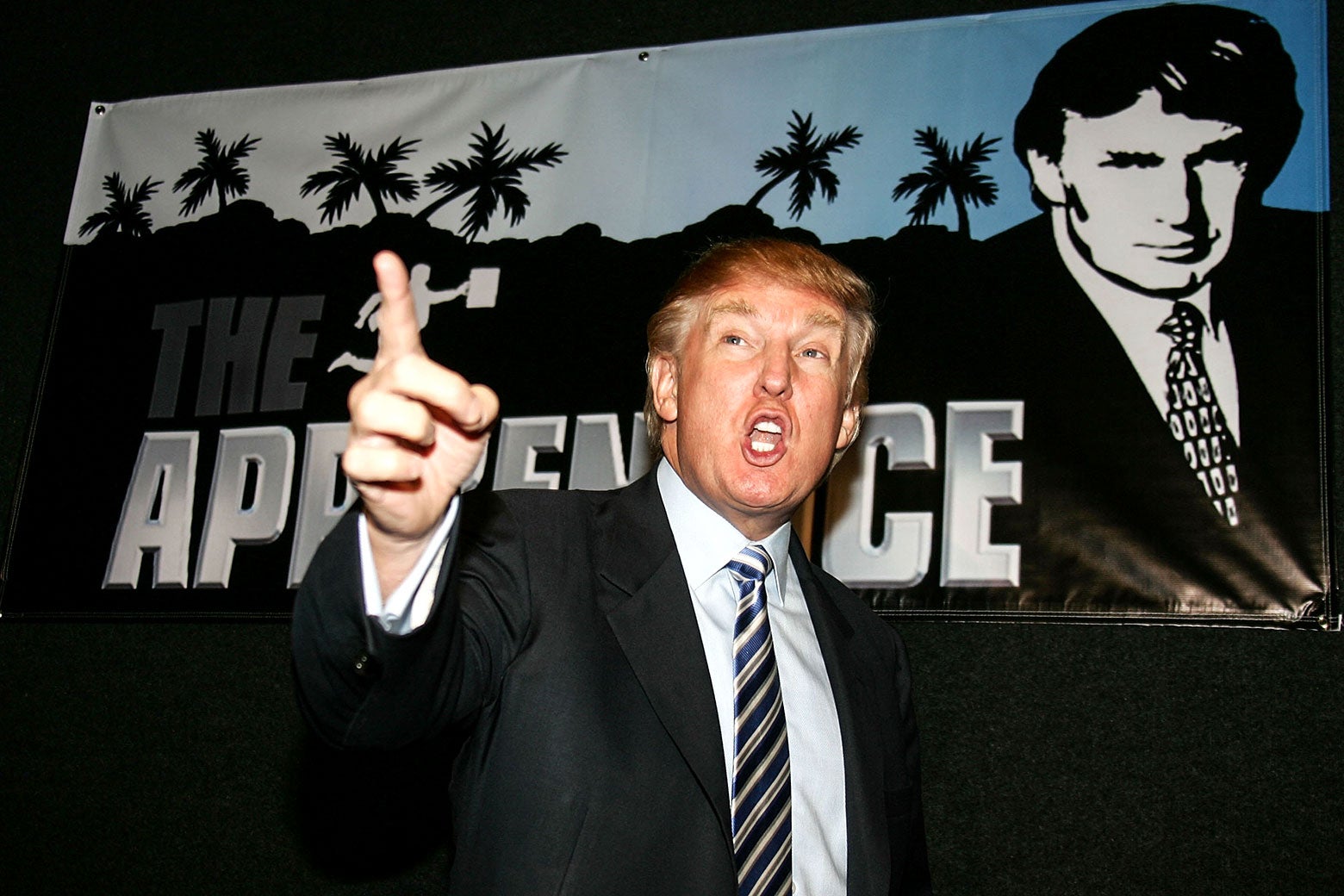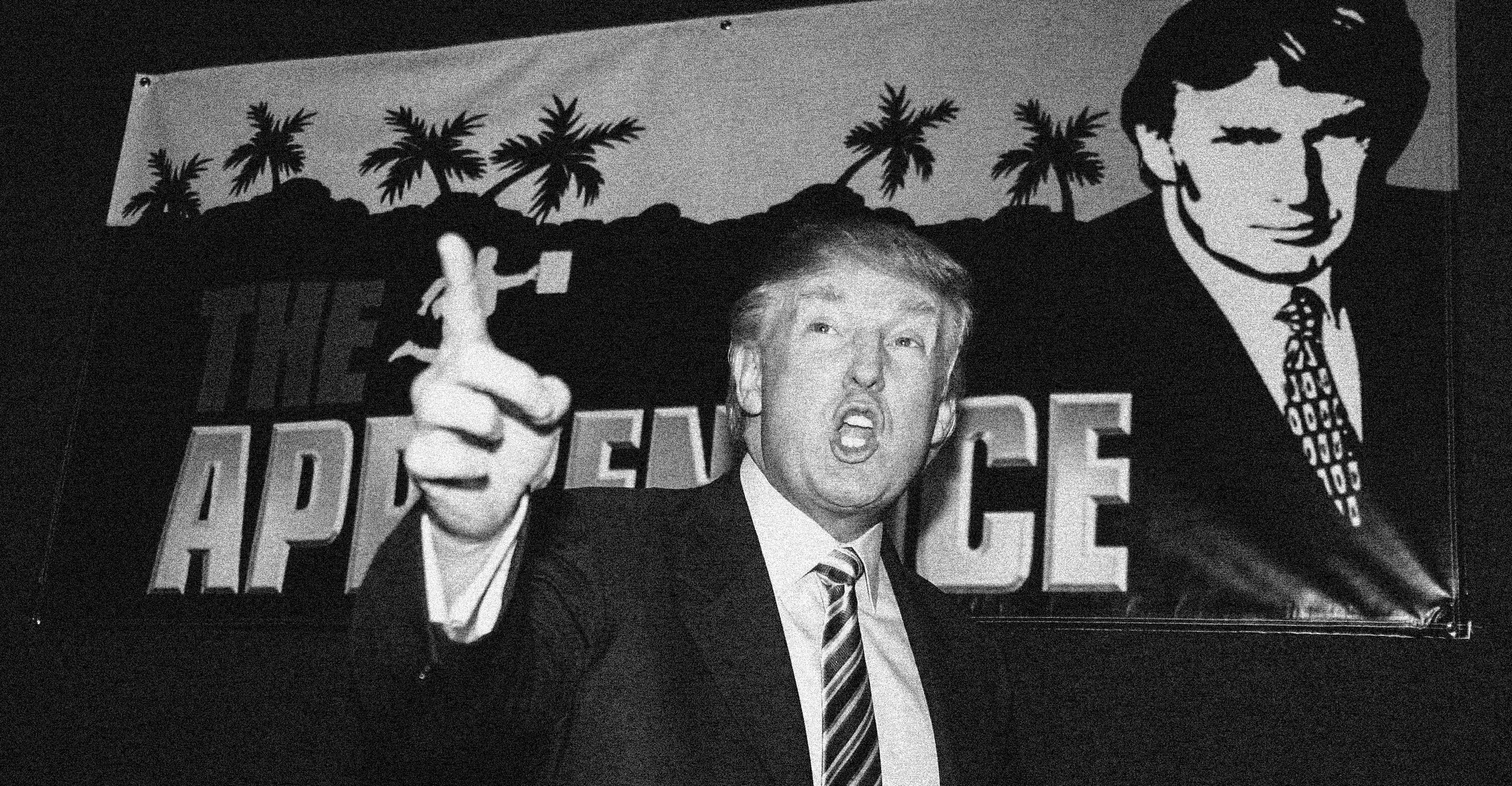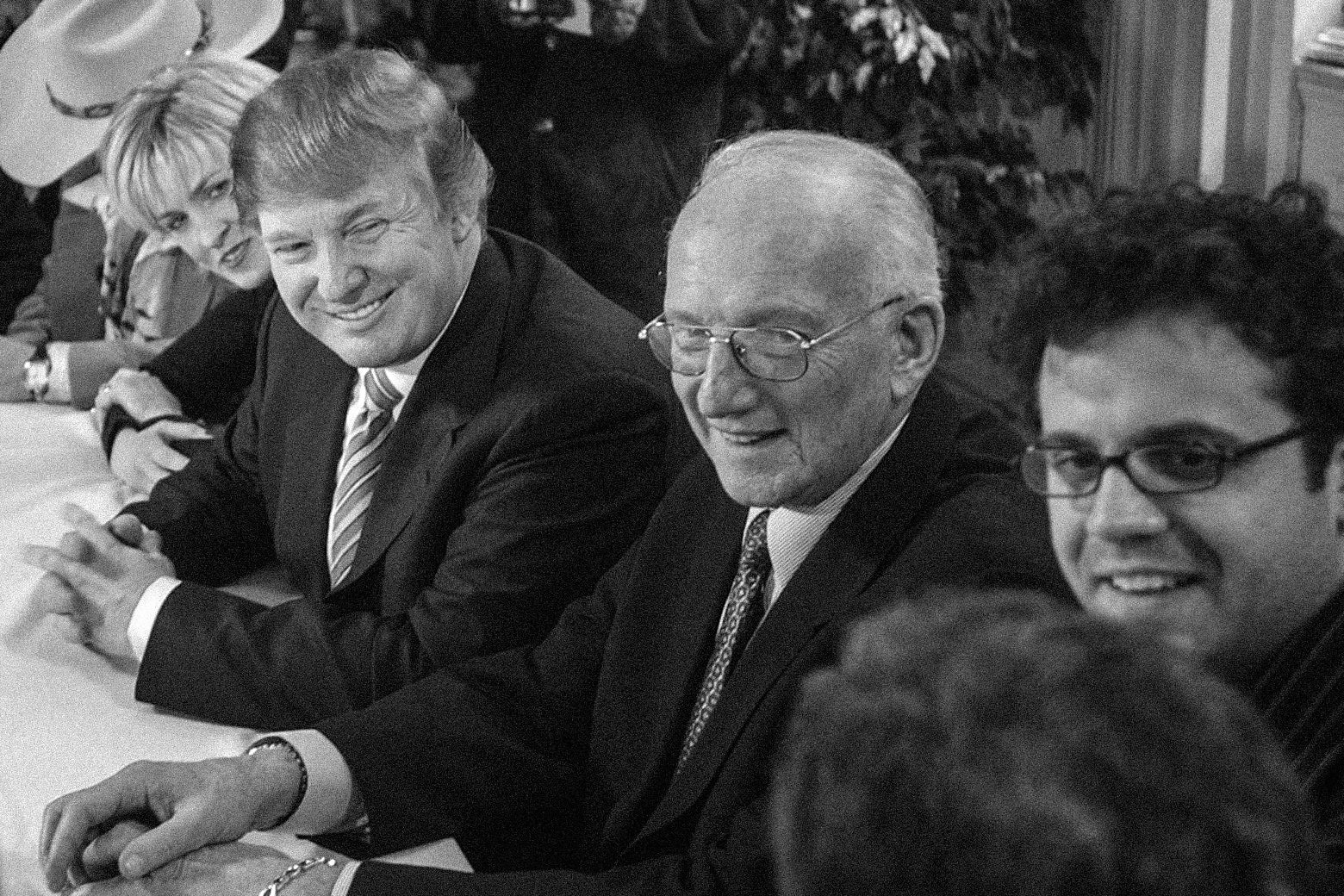
For 20 Years, I Couldn’t Say What Donald Trump Did on the Set of The Apprentice. Now I Can.
The con we pulled on America just won’t die.

Frazer Harrison/Getty Images
TELEVISION
The Donald Trump I Saw on
For 20 years, I couldn’t say what I watched the former president do on the set of the show that changed everything. Now I can.
BY BILL PRUITTMAY 30, 20245:35 AM
TWEET SHARE COMMENT
On Jan. 8, 2004, just more than 20 years ago, the first episode of The Apprentice aired. It was called “Meet the Billionaire,” and 18 million people watched. The episodes that followed climbed to roughly 20 million each week. A staggering 28 million viewers tuned in to watch the first season finale. The series won an Emmy nomination for Outstanding Reality-Competition Program, and the Television Critics Association called it one of the best TV shows of the year, alongside The Sopranos and Arrested Development. The series—alongside its bawdy sibling, The Celebrity Apprentice—appeared on NBC in coveted prime-time slots for more than a decade.
The Apprentice was an instant success in another way too. It elevated Donald J. Trump from sleazy New York tabloid hustler to respectable household name. In the show, he appeared to demonstrate impeccable business instincts and unparalleled wealth, even though his businesses had barely survived multiple bankruptcies and faced yet another when he was cast. By carefully misleading viewers about Trump—his wealth, his stature, his character, and his intent—the competition reality show set about an American fraud that would balloon beyond its creators’ wildest imaginations.
I should know. I was one of four producers involved in the first two seasons. During that time, I signed an expansive nondisclosure agreement that promised a fine of $5 million and even jail time if I were to ever divulge what actually happened. It expired this year.
No one involved in The Apprentice—from the production company or the network, to the cast and crew—was involved in a con with malicious intent. It was a TV show, and it was made for entertainment. I still believe that. But we played fast and loose with the facts, particularly regarding Trump, and if you were one of the 28 million who tuned in, chances are you were conned.
As Trump answers for another of his alleged deception schemes in New York and gears up to try to persuade Americans to elect him again, in part thanks to the myth we created, I can finally tell you what making Trump into what he is today looked like from my side. Most days were revealing. Some still haunt me, two decades later.
Nearly everything I ever learned about deception I learned from my friend Apollo Robbins. He’s been called a professional pickpocket, but he’s actually a “perceptions expert.” Apollo has spent his life studying the psychology of how we distort other people’s perceptions of reality and has done so by picking pockets onstage for the entertainment of others. He is a master of deception, a skill that made him, back in the day, the so-called best-kept secret in Las Vegas. After “fanning” his marks with casual, unobtrusive touch designed to make them feel safe or at ease, Apollo determines where the items reside—the wallet inside a breast pocket, the Rolex fastened to a wrist—and he removes these items without detection. He’ll even tell you what he intends to steal before he does it. He does this not to hurt people or bewilder them with a puzzle but to challenge their maps of reality. The results are marvelous. A lot of magic is designed to appeal to people visually, but what he’s trying to affect is your mind, your moods, your perceptions.
As a producer working in unscripted, or “reality,” television, I have the same goal. Like Apollo, I want to entertain, make people joyful, maybe even challenge their ways of thinking. But because I often lack the cinematic power of a movie, with its visual pyrotechnics or rehearsed dialogue, I rely on shaping the perceptions of viewers, manipulating their maps of reality toward something I want them to think or feel.
The presumption is that reality TV is scripted. What actually happens is the illusion of reality by staging situations against an authentic backdrop. The more authentic it is to, say, have a 40-foot wave bearing down on a crab boat in the Bering Sea for Deadliest Catch, the more we can trick you into thinking a malevolent Russian trawler is out there messing with the crabber’s bait. There is a trick to it, and when it works, you feel as if you’re watching a scripted show. Although very few programs are out-and-out fake, there is deception at play in every single reality program. The producers and editors are ostensibly con artists, distracting you with grand notions while we steal from you your precious time.
But the real con that drove The Apprentice is far older than television. The “pig in the poke” comes from an idiom dating to 1555: “I’ll never buy a pig in a poke / There’s many a foul pig in a fair cloak.” It refers to the time-honored scam of selling a suckling pig at market but handing over a bag (the poke) to the purchaser, who never looks inside it. Eventually, he discovers he’s purchased something quite different.
Our show became a 21st-century version. It’s a long con played out over a decade of watching Trump dominate prime time by shouting orders, appearing to lead, and confidently firing some of the most capable people on television, all before awarding one eligible person a job. Audiences responded to Trump’s arrogance, his perceived abilities and prescience, but mostly his confidence. The centerpiece to any confidence game is precisely that—confidence.
As I walk into my interview for The Apprentice, I inadvertently learn how important it is for every one of us involved to demonstrate confidence above all else.
I sit down with Jay Bienstock, the showrunner, who has one last producer position to fill and needs somebody capable and hardworking. His office is sparse, and the desk is strategically placed directly across from the couch, with a noticeable angle downward from his desk to whomever is seated across from him. (I’m recalling all of the quoted conversations here to the best of my ability; they are not verbatim.)
He is smiling and even laughing throughout the interview, but from the steep angle at which he gazes down on me, there is no mistaking who is in charge. He seems to like what he hears and offers to follow up with my agent. “But I have to check your references before I can hire you,” he says. “You’d be crazy not to,” I reply. He laughs, claps his hands together, and grins. “THAT’S what I’m talking about,” he says. “That’s the confidence this show needs!”
I sit there, several inches below eyeline, and ponder what just happened. What, I wonder, is so “confident” about suggesting he’d be crazy to not check my references? Then it dawns on me. He thinks I meant “You’d be crazy not to hire me.” The signal to noise begins.
Listen to Bill Pruitt discuss this story on What Next, Slate’s daily news podcast:
VIEW TRANSCRIPT
Before I leave, I have to ask: Why Trump? Bienstock discovers that we both lived in New York for a time. Knowing what we know about Trump, selling the idea that intelligent people would compete to land a job working for him will be a challenge.
“The idea is to have a new and different billionaire every season—just like there’s a new and different island on Survivor. We reached out to Spielberg, Katzenberg, Geffen, among others,” he says. “Trump is the only one who agreed to sign on.” (Bienstock didn’t respond to a request for comment.)
“We’ll make it work,” Bienstock says confidently. I rise, shake his hand, and leave, and head over to Dutton’s bookstore to pick up a used copy of Trump’s The Art of the Deal. It is filled with takeaways about branding and strategizing but conveniently omits Trump bluffing his way through meetings with contractors, stiffing them when it is convenient to do so, and betraying his most trusted colleagues to get what he wants. (The book’s ghostwriter, Tony Schwartz, has since tried to get the bestseller recategorized in the Library of Congress as a work of fiction.)
Another show of confidence is the budget the series commands. It’s not as expensive as a scripted series, but for a reality show, the price is high. Never have I worked on a series with this level of funding, but the cost is justified. This needs to feel real.
New York City is the perfect—though expensive—backdrop. Trump’s actual offices are, however, less than telegenic. They are cramped, and a lot of the wood furniture is chipped or peeling. None of it is suitable to appear on camera. We need what grifters call the Big Store: a fake but authentic-looking establishment in which the con goes down. Trump Tower, at the time, is mostly condos and some offices situated in the high-rise. The mezzanine comprises vacant and overpriced retail space, all of it unfinished. Trump offers the space to the production—at a premium, naturally—and it is inside this location that we create our own “reception area” with doors leading to a fake, dimly lit, and appropriately ominous-feeling “boardroom.”
Next door, there’s the “suite” where the contestants will live, which is made to look like a trendy loft-style apartment they all share. The lodgings are made up of partitions surrounding tiny, hard bunks upon which the candidates sleep; the illusion comes from elegantly appointed common areas, where most of the interplay will go down.
During a tour of the set, I have my first encounter with Trump. I leave the suite and enter the gear room, the only vacant retail space that will remain unfinished. It is filled with equipment and crew members milling about. In walks a trio of men. In the middle is Trump, in a navy blue suit and scarlet tie. He’s surprisingly tall, and not just because of the hair. He is flanked by two even taller men. Bienstock makes introductions, and I watch as Trump shakes hands with everyone. I’d been told he would never do this, something about fearing unwanted germs. When it is my turn, I decide on the convivial two-hander and place my right hand into his and my left onto his wrist as we shake. His eye contact is limited but thorough. He is sizing me up. He looks like a wolf about to rip my throat out before turning away, offering me my first glimpse at the superstructure—his hairstyle—buttressed atop his head with what must be gallons of Aqua Net.
I watch as Trump saunters around the room, snatches up a fistful of M&Ms from the craft service table set aside for the crew, and shoves them into his mouth. Then he is gone, ushered away toward some important meeting he must attend, as if to say, to one and all present, This is unimportant.
Eventually, it’s time to roll cameras. When Trump is called to perform, we are filming the first scene of the first episode on the floor of the New York Stock Exchange, and he is about to deliver the first task. Filming inside this beacon of capitalism and wealth gives the series the legitimacy it needs. A con artist would call staging the scam inside a legitimate institution “playing a man against the wall.”





